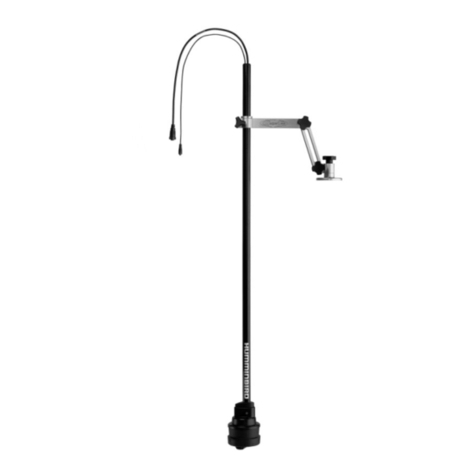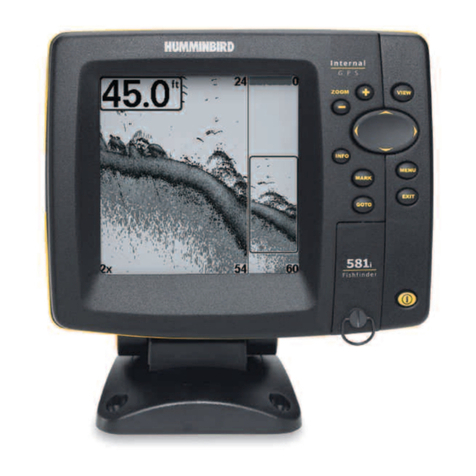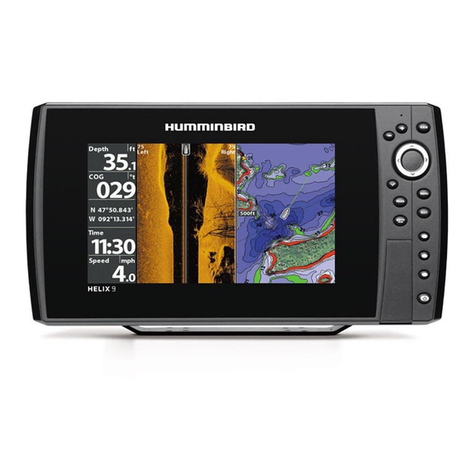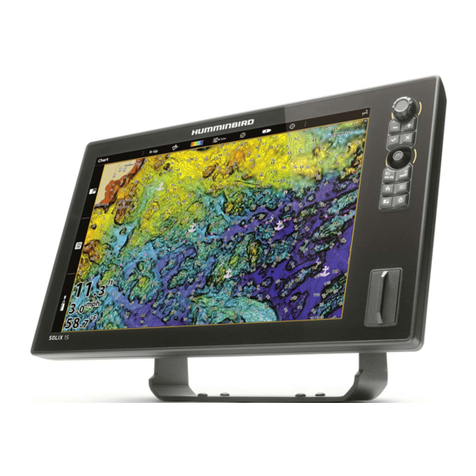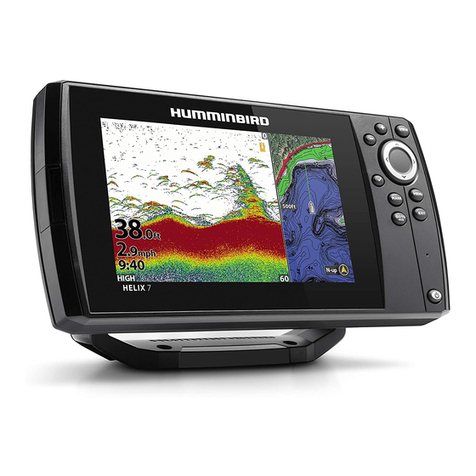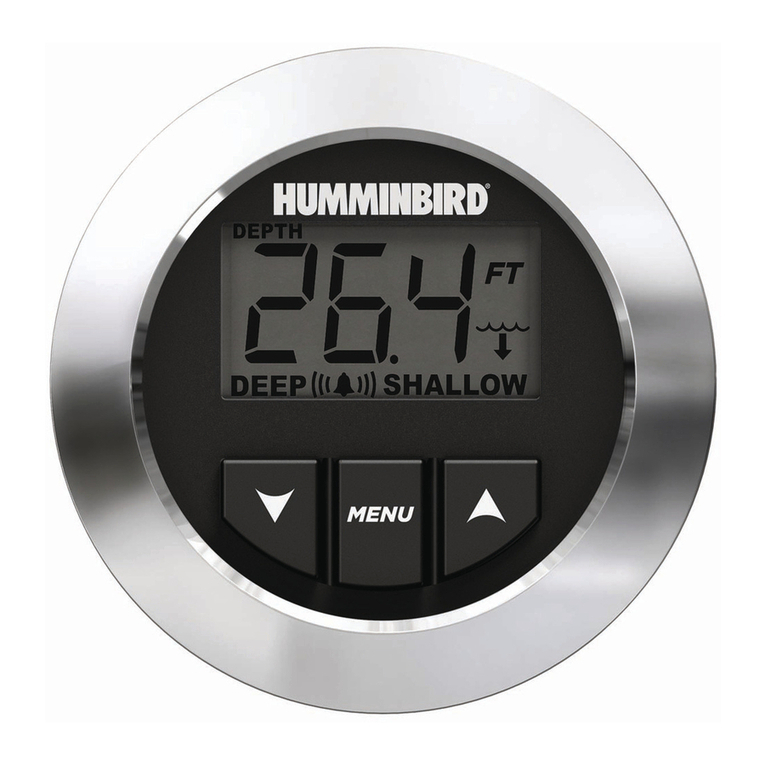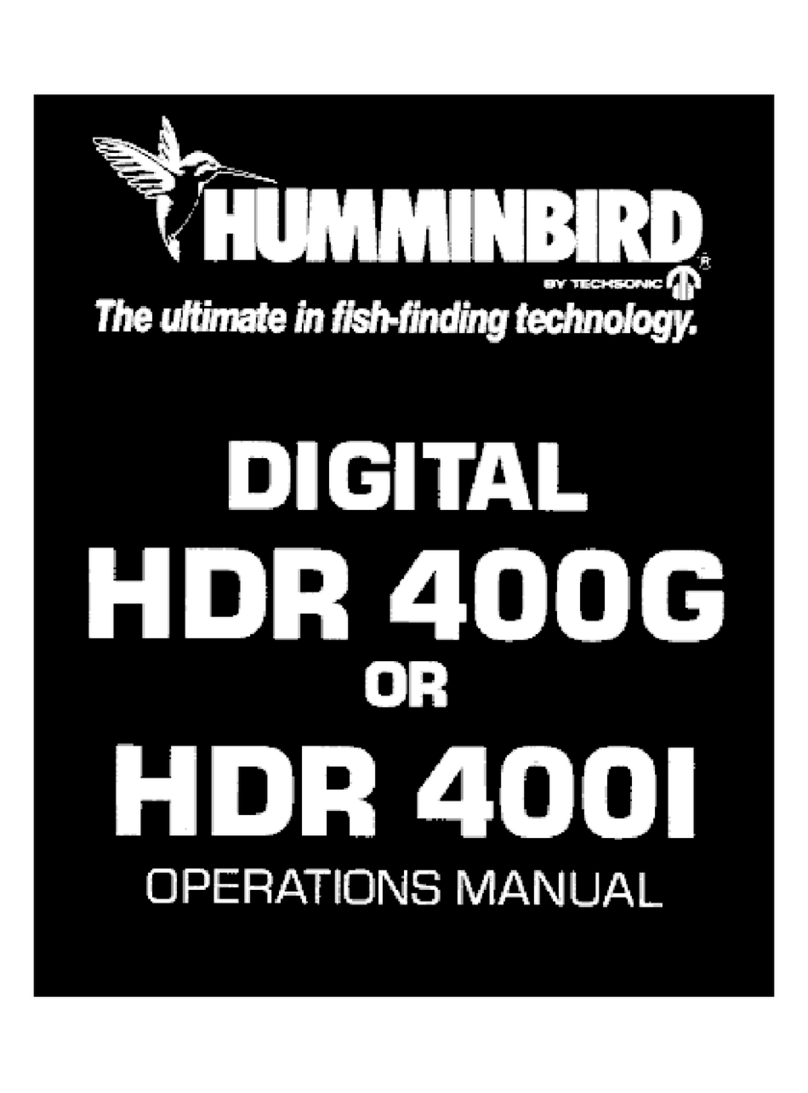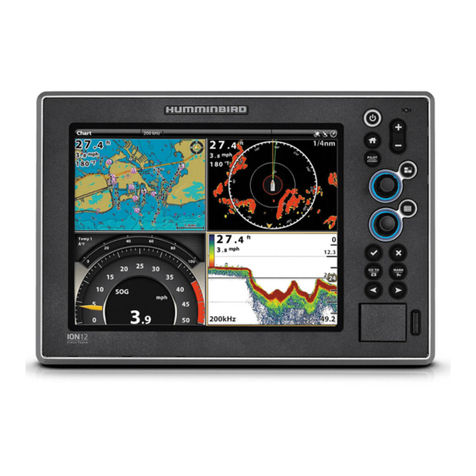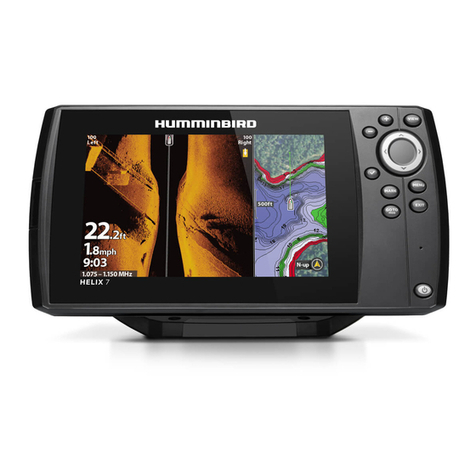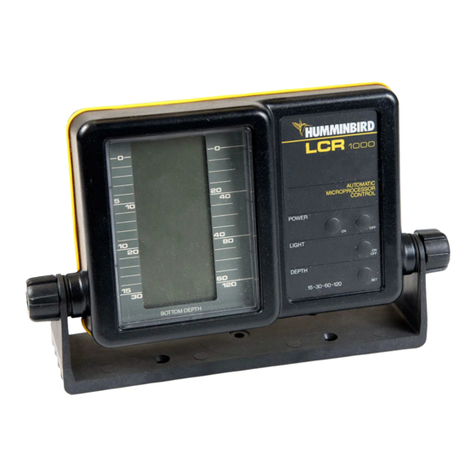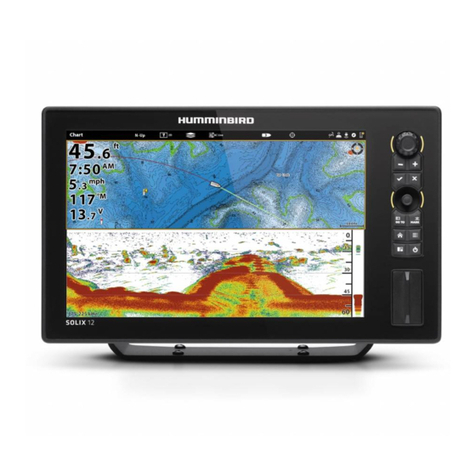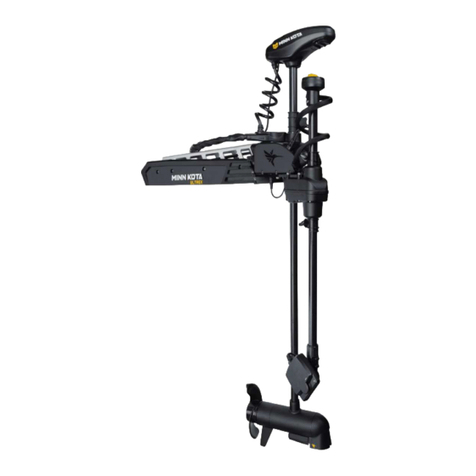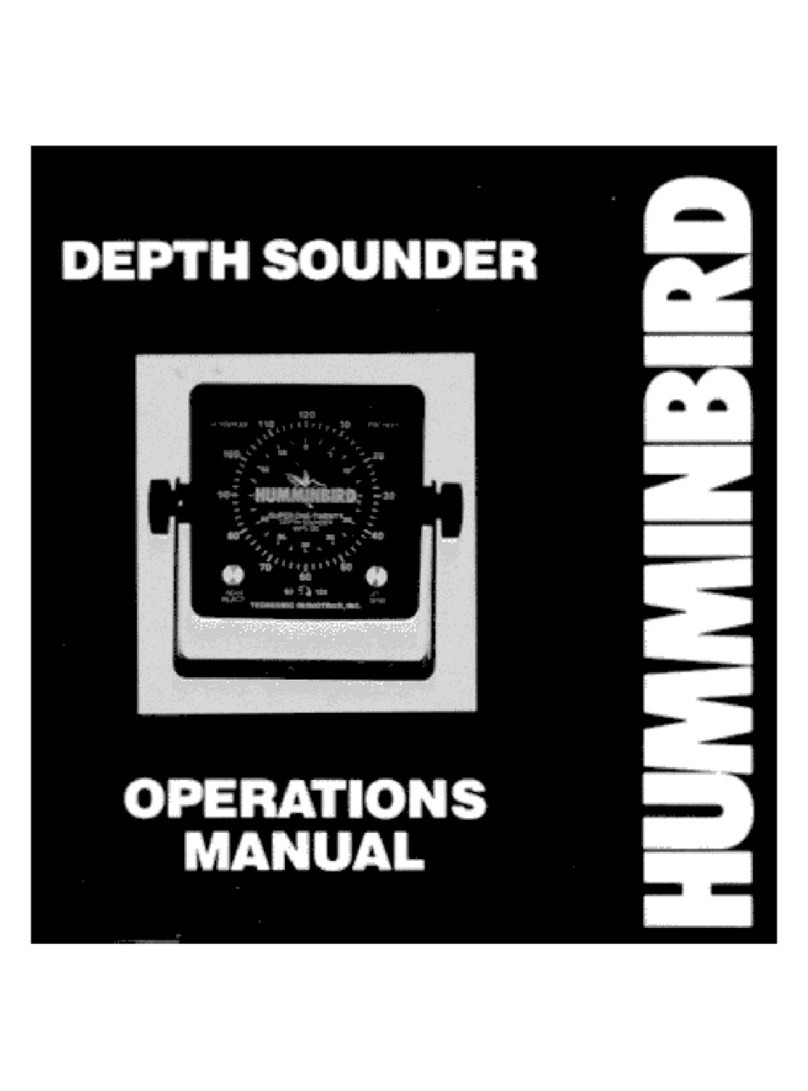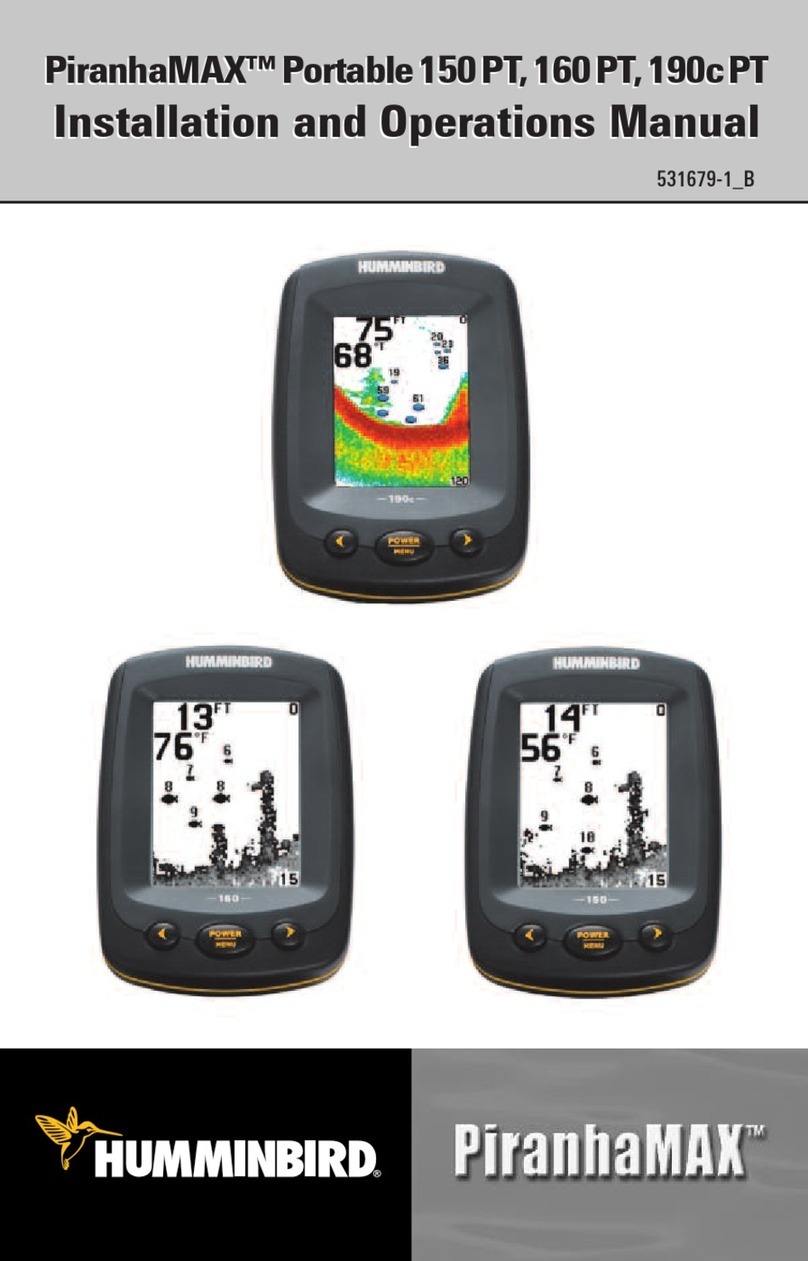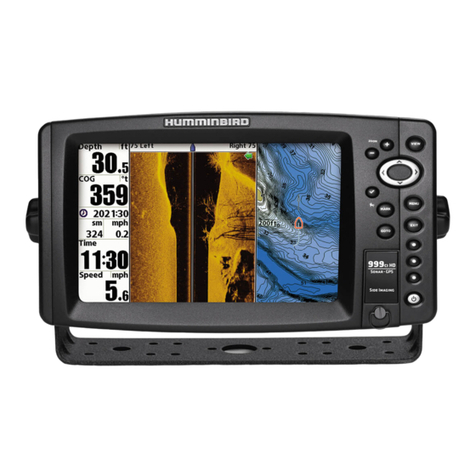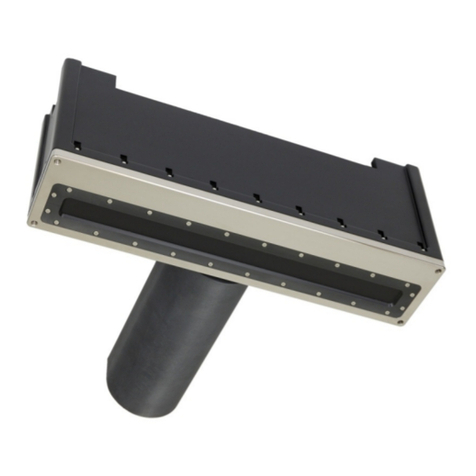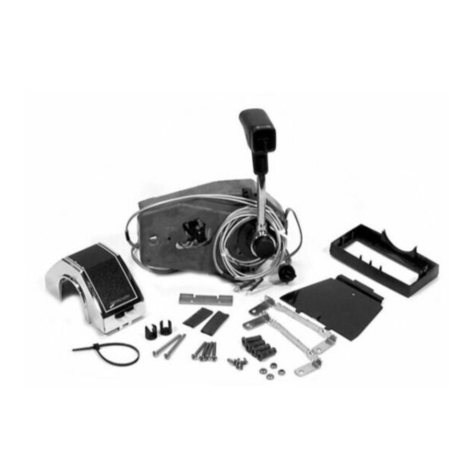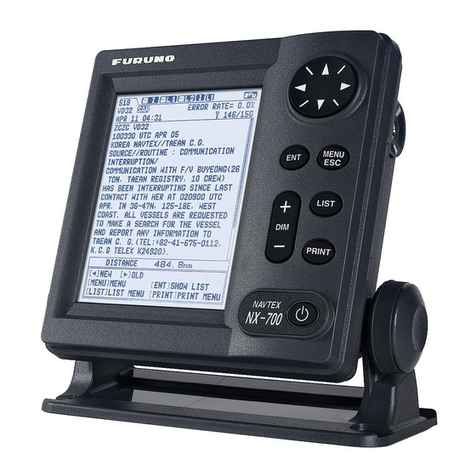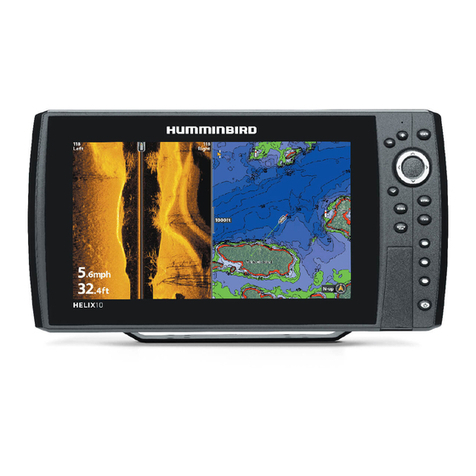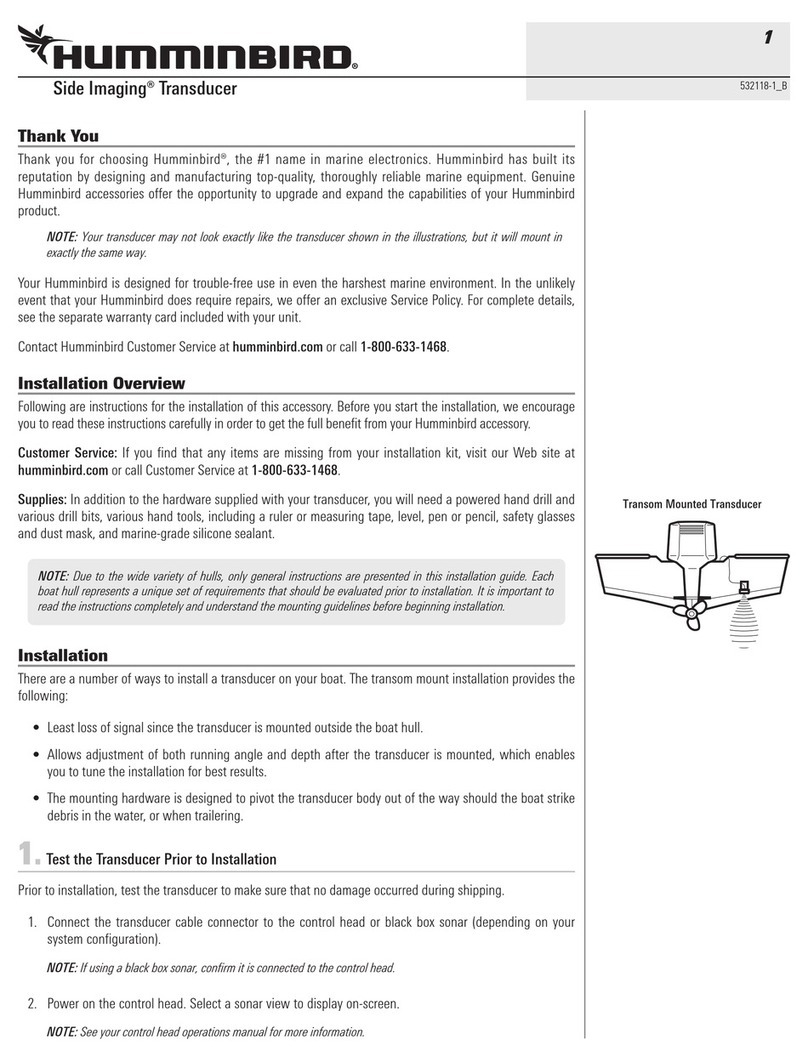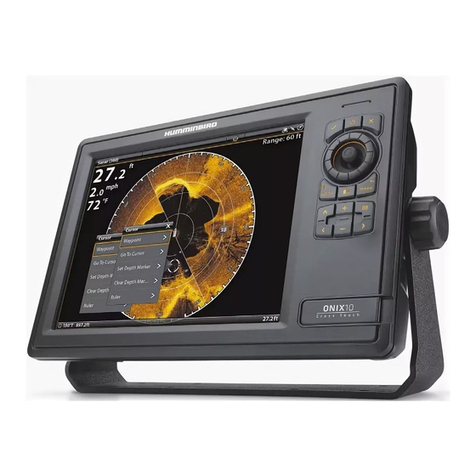
OVERVIEW
Following are instructions for the installation of the Fishin’ Buddy MAX and Fishin’
Buddy MAX D . We encourage you to read this guide before starting the
installation, so you may understand the installation requirements.
SUPPLIES: n addition to the hardware supplied with your control head, you will
need eight (8) AA alkaline batteries, a Phillips-head screwdriver, and a flat-head
screwdriver. f you plan to permanently mount the Fishin’ Buddy MAX to your boat,
you will also need four (4) #10 wood screws or bolts, a marker or pencil, a powered
hand drill and various drill bits, safety glasses and dust mask, and marine-grade
silicone sealant (see Atta h the Fishin’ Buddy MAX Mounting Clamp to the
Boat for more information).
WARNING! emove the Fishin’ Buddy MAX from the mounting clamp when the boat
is traveling. Do NOT travel at high speeds with the Fishin’ Buddy MAX installed as it can
cause damage. Use the Fishin’ Buddy MAX at trolling speed only.
WARNING! Do NOT attempt to power the Fishin’ Buddy MAX from the boat’s power
supply. This can result in permanent damage to your Fishin’ Buddy MAX. Humminbird®
is not responsible for over-voltage or over-current failures.
NOTE: The procedures and features described in this guide are subject to change
without notice. This guide was written in English and may have been translated to
another language. Humminbird is not responsible for incorrect translations or
discrepancies between documents.
NOTE: The illustrations in this guide may not look the same as your product, but your
unit will function in the same way.
INSTALLATION OVERVIEW
The Fishin’ Buddy MAX installation requires the following main assembly tasks:
• nsert the Batteries in the Battery Well
• Attach the Control Head Mounting Bracket to the Fishin’ Buddy MAX Shaft
• nstall the Control Head
•Connect the Cables to the Control Head
• Attach the Fishin’ Buddy MAX Mounting Clamp to the Transom
• Mount the Fishin’ Buddy MAX
1.
Inser he Ba eries in he Ba ery Well
The Fishin’ Buddy MAX requires eight alkaline AA batteries (not included).
CAUTION! Always remove discharged batteries promptly and before periods of storage
to prevent potential damage due to battery acid leakage. Failure to do so may void your
warranty.
1. Turn the battery cap counterclockwise and remove it from the battery well.
2. Gently lift the battery pack out of the battery well (see the illustration
Installing the Batteries).
NOTE: Do NOT remove the foam insert from inside the battery well.
3. Using the diagram inside the battery pack as a guide, install the eight
alkaline AA batteries (not included).
4. nstall the battery pack in the battery well. Confirm the wires are stored
along the inside wall of the battery well (and not underneath the battery
pack).
5. Confirm the gasket is positioned correctly around the battery well (see the
illustration Installing the Batteries).
6. nstall the battery cap on the battery well and turn clockwise to tighten.
Hand-tighten only!
2.
A ach he Con rol Head Moun ing Bracke
After installing the batteries, use the following instructions to install the control
head mounting bracket.
1. Set the control head mounting bracket in place on top of the battery cap.
2. Align the three screw holes on the retainer ring with the screw holes on top
of the battery cap and install the retainer ring over the control head mounting
bracket. See the illustration Installing the Control Head Mounting Bra ket.
3. nsert the three #6 flat-head machine screws (included) into the threaded
screw holes. Hand-tighten each screw just enough to hold the retainer ring
in place.
NOTE: Do not fully tighten the screws until all three screws are in place.
4. After all three screws are installed, fully tighten each screw to secure the
mounting bracket. Hand-tighten only!
screws
I stalli g the Co trol Head Mou ti g Bracket
retainer ring
control head
mounting bracket
I stalli g the Batteries
battery well
battery cap
battery pack
gasket
3.
Ins all he Con rol Head
1. Position the control head so the screen is facing the opposite side of the
cables on the battery well (see the illustration Installing the Control Head).
Rotate the control head mounting bracket, if necessary.
2. nstall the control head on the mounting bracket.
3. Tilt the control head to adjust the viewing angle, as needed.
4. Once you have set the control head viewing angle, insert the included bolt
through the hole on the mounting arm. Screw the mounting knob on to the
end of the bolt and hand-tighten. Hand-tighten only!
Rotate the Control Head: Swivel the control head on the mounting bracket
by grasping the control head mounting bracket and rotating it.
4.
Connec he Cables o he Con rol Head
Use the following instructions to attach the transducer and power cables on the
battery well to the keyed connectors on the back of the control head.
1. Locate the transducer and power cables on the
battery well, and route the cable connectors to
the rear of the control head.
2. nsert the cable connectors into the correct ports
on the control head. See the illustrations Control
Head Ports and Conne ting Cables to the
Control Head.
5. A ach he Fishin’ Buddy MAX Moun ing Clamp
o he Boa
Review the following installation options before proceeding with the installation:
•Temporary Mount: Attach the mounting clamp to the boat using the clamp
feature. The clamp provides the most versatile and portable method to mount
the Fishin’ Buddy MAX to the transom of your boat.
OR
•Permanent Mount: Attach the mounting clamp using the permanent
mounting slots to screw or bolt the mounting clamp to the boat. You will
need four (4) #10 wood screws or bolts and marine-grade silicone sealant
(not included).
Determine the Mounting Location
Use the following information when considering a mounting location:
• The Fishin’ Buddy MAX should be mounted where it will be visible and
accessible.
• The Fishin’ Buddy MAX must be mounted so that the transducer (located at
the end of the Fishin’ Buddy MAX shaft) is fully submerged in the water,
because the sonar signal cannot pass through air.
•Turbulence: t is very important to locate the transducer in an area that is
relatively free of turbulent water. As the boat moves through the water,
turbulence is generated by the weight of the boat and the thrust of the
propeller(s) - either clockwise or counterclockwise. This turbulent water is
normally confined to areas immediately aft of ribs, strakes, or rows of rivets
on the bottom of the boat, and in the immediate area of the propeller(s).
Clockwise propellers create more turbulence on the port side. On outboard
or inboard/outboard boats, it is best to locate the transducer at least 15" to
the side of the propeller(s).
•Fishin’ Buddy MAX DI: The Down maging® transducer must be oriented so
that the pointed end of the transducer body points towards the stern (or
behind the boat). The front, rounded end must point towards the bow. See
Mounting the Fishin’ Buddy MAX DI for more information.
Assemble the Mounting Clamp
1. Determine the assembly option for your mounting location using the
illustrations below.
Co trol Head Ports
transducerpower
I stallatio Optio 2
attach the support arm on
the end of the mounting clamp
support arm mounting clamp
mounting
clamp
I stallatio Optio 1
attach the support arm on
the side of the mounting clamp
pivot knob support arm
screw slots
screw slots
pivot knob
Istalli g the Co trol Head
bolt
mounting arms
mounting bracket
control head
knob
power
Co ecti g Cables to the Co trol Head
transducer
2. Align the ratcheted hole on the support arm with the ratcheted mounting
location determined in step 1. See the illustrations Mounting Option 1 and
Mounting Option 2.
3. Thread the pivot knob through the hole in the support arm and turn
clockwise to tighten (see the illustrations Mounting Option 1 and Mounting
Option 2). Hand-tighten only!
Attach the Mounting Clamp to the Transom
To permanently mount the Fishin’ Buddy MAX to your boat, see the section
Permanently Install the Mounting Clamp.
1. Loosen the clamp by turning the adjustment knob counterclockwise.
2. nstall the mounting clamp in the chosen mounting location. Confirm it is
resting on the top surface of the transom (seated as far down as possible).
3. Turn the adjustment knob clockwise to secure the mounting clamp to the
transom. Do not over-tighten!
4. Confirm the mounting clamp is securely installed. f the clamp feels unstable
after tightening, loosen the adjustment knob, reposition the clamp, and
repeat step 3.
Permanently Install the Mounting Clamp
Use the following instructions to permanently mount the Fishin’ Buddy MAX on
your boat. Review the installation instructions before proceeding.
1. Hold the mounting clamp against the transom of the boat in the mounting
location you have selected.
2. Use the four permanent mounting slots at the base of the mounting bracket
as a guide, and use a pencil or marker to mark where to drill the four
mounting holes.
3. Drill four pilot holes using a 7/64” drill bit. Apply marine-grade silicone
sealant to the holes.
NOTE: On fiberglass, it is best to use progressively larger drill bits to reduce the
chance of chipping or flaking the outer coating.
4. Reposition the mounting clamp and attach it to the boat using #10 wood
screws or bolts (not included). Hand-tighten only!
Proceed to the installation section for you Fishin’ Buddy MAX model, as
follows:
•Mount the Fishin’ Buddy MAX
• Mount the Fishin’ Buddy MAX D
6. Moun he Fishin’ Buddy MAX
When mounted, the Fishin’ Buddy MAX must be positioned so that the transducer
will be submerged when the boat is in the water.
1. Carefully slide the Fishin’ Buddy MAX shaft through the support arm ring on
the mounting clamp until the battery well snaps into place. Confirm it is fully
seated in the support arm ring.
2. You may need to adjust the mounting clamp support arm ring to keep the
transducer pointing straight down. Loosen the pivot adjustment knob and
make the necessary adjustments.
7. Moun he Fishin’ Buddy MAX DI
The Down maging transducer has specific mounting requirements. Review the
information below before proceeding with the installation.
• When mounted, the Fishin’ Buddy MAX D must be positioned so that the
transducer will be submerged when the boat is in the water.
• The Down maging transducer must be oriented so that the pointed end of
the transducer body points towards the stern (or behind the boat). The front,
rounded end must point towards the bow. See the illustration Completed
Fishin’ Buddy MAX DI Installation.
Attachi g the Mou ti g Clamp to the Tra som
transom
mounting clamp
adjustment
knob
CAUTION! Do not over-tighten the clamp!
Perma e tly Mou ti g the Clamp
#10 mounting screws
(not included)
transom
permanent
mounting slots
I stalli g the Fishi ’ Buddy MAX
support arm ring
transducer
Fishin’ Buddy
MAX shaft
Confirm the Transducer Orientation
To install the Fishin’ Buddy MAX D with the correct transducer orientation, you
may need to adjust the transducer position on the Fishin’ Buddy MAX D shaft.
1. Locate the shaft collar and turn it clockwise to loosen.
2. Pull the telescoping shaft down until it slides out from the Fishin’ Buddy
MAX D shaft (see the illustration Adjusting the Fishin’ Buddy MAX DI
Teles oping Shaft). Do NOT pull on the transducer!
3. Rotate the telescoping shaft to set the correct transducer orientation.
4. Align the slots on the telescoping shaft with the slots at the base of the
Fishin’ Buddy MAX D shaft and slide the telescoping shaft up to the desired
length.
5. Slide the shaft collar up to the base of the shaft and turn counterclockwise
to tighten.
Install the Fishin’ Buddy MAX DI
1. nstall the Fishin’ Buddy MAX D shaft through the opening in the support
arm ring on the mounting clamp.
2. Slide the shaft down until the battery well snaps into place.
3. Swivel the control head, as needed, so the screen is facing you.
Adjust the Fishin’ Buddy MAX DI Telescoping Shaft Length (Optional)
You may need to adjust the length of the Fishin’ Buddy MAX D telescoping shaft
to fully submerge the transducer in the water. Refer to the instructions below.
1. Remove the Fishin’ Buddy MAX D from the mounting clamp.
2. Locate the shaft collar and turn it clockwise to loosen.
3. Pull the shaft collar down and adjust the length of the telescoping shaft as
needed. Do NOT pull on the transducer!
4. Secure the Position: Slide the shaft collar up to the base of the shaft and
turn counterclockwise to tighten.
5. nstall the Fishin’ Buddy MAX D in the support arm ring (see the section
Install the Fishin’ Buddy MAX DI).
Your control head is now ready for on-the-water operation. See your control head
operations manual for further details.
Adjusti g the Fishi ’ Buddy MAX DI Telescopi g Shaft
telescoping shaft
shaft collar
Completed Fishi ’ Buddy MAX DI I stallatio
I stalli g the Fishi ’ Buddy MAX DI
support arm ring
shaft collar
Down Imaging
transducer
Fishin’ Buddy
MAX DI shaft
MAINTENANCE
Your Humminbird model is designed to provide years of trouble-free operation
with virtually no maintenance. Follow the simple procedures below to ensure that
your Humminbird model continues to deliver top performance.
Con rol Head Main enance
t is important to consider the following precautions when using your control head.
WARNING! Do not use a hemi al glass leaner on the s reen. Chemicals in the
solution may cause cracking in the lens of the unit.
•Chemicals, such as those found in bug spray and sunscreen, may cause
permanent damage to the control head screen. Such damage is not
covered by the warranty.
• Never leave your Humminbird unit in a closed car or trunk - the extremely
high temperatures generated in hot weather can damage the electronics.
Use the following information to keep the control head and screen clean.
•Screen: When cleaning the LCD protective screen, use a chamois and non-
abrasive, mild cleaner. Be careful to avoid scratching the lens.
NOTE: Do not wipe the screen while dirt or grease is on the screen.
•Control Head: f the unit comes into contact with salt spray, wipe the
affected surfaces with a cloth dampened in fresh water.
Transducer Main enance
•f your transducer remains in the water for long periods of time, algae and
other marine growth can reduce the effectiveness of the transducer.
Periodically clean the face of the transducer with a mild, marine-safe and
plastic-safe soap or solution.
•f your transducer remains out of the water for a long period of time, it
may take some time to wet the transducer when returned to the water.
Small air bubbles can cling to the surface of the transducer and interfere
with proper operation. These bubbles dissipate with time, or you can wipe
the face of the transducer with your fingers after the transducer is in the
water.
SPECIFICATIONS
Power Requirement . . . . . . . . . . . . . . . . . . . . . . . . . . . . . . 8 AA alkaline batteries
Battery Life . . . . . . . . . . . . . . . . . . . . . . . . . . . . . . . . . . . . . . . . . . . . . . . . 10 hours
NOTE: Continuous operation with the Backlight on can significantly reduce battery life.
WARNING! Disassembly and repair of this electronic unit should only be performed by
authorized service personnel. Any modification of the serial number or attempt to repair the
original equipment or accessories by unauthorized individuals will void the warranty.
WARNING! This product contains chemicals known to the State of California to cause
cancer and birth defects or other reproductive harm.
NOTE: Product specifications and features are subject to change without notice.
ENVIRONMENTAL COMPLIANCE STATEMENT: It is the intention of Johnson Outdoors
Marine Electronics, Inc. to be a responsible corporate citizen, operating in compliance with
known and applicable environmental regulations, and a good neighbor in the communities
where we make or sell our products.
WEEE DIRECTIVE: EU Directive 2002/96/EC “Waste of Electrical and Electronic Equipment
Directive (WEEE)” impacts most distributors, sellers, and manufacturers of consumer electronics
in the European Union. The WEEE Directive requires the producer of consumer electronics to take
responsibility for the management of waste from their products to achieve environmentally
responsible disposal during the product life cycle.
WEEE compliance may not be required in your location for electrical & electronic equipment
(EEE), nor may it be required for EEE designed and intended as fixed or temporary installation in
transportation vehicles such as automobiles, aircraft, and boats. In some European Union
member states, these vehicles are considered outside of the scope of the Directive, and EEE for
those applications can be considered excluded from the WEEE Directive requirement.
This symbol (WEEE wheelie bin) on product indicates the product must not be disposed
of with other household refuse. It must be disposed of and collected for recycling and
recovery of waste EEE. Johnson Outdoors Marine Electronics, Inc. will mark all EEE
products in accordance with the WEEE Directive. It is our goal to comply in the
collection, treatment, recovery, and environmentally sound disposal of those products; however,
these requirements do vary within European Union member states. For more information about
where you should dispose of your waste equipment for recycling and recovery and/or your
European Union member state requirements, please contact your dealer or distributor from which
your product was purchased.
© 2015 Johnson Outdoors Marine Electronics, nc. All rights reserved.
CONTACT HUMMINBIRD
Contact Humminbird Customer Service in any of the following ways:
Web site:
humminbird.com
E-mail:
service@humminbird.com
Telephone:
1-800-633-1468
Direct Shipping:
Humminbird
Service Department
678 Humminbird Lane
Eufaula, AL 36027 USA
Hours of Operation:
Monday - Friday
8:00 a.m. to 4:30 p.m. (Central Standard Time)
FISHIN’ BUDDY® MAX &
FISHIN’ BUDDY® MAX DI
INSTALLATION GUIDE
532418-1 A
Fishi Buddy_MAX_I stallatio _Guide_532418-1_A.qxp_Layout 1 9/14/15 9:45 PM Page 1
